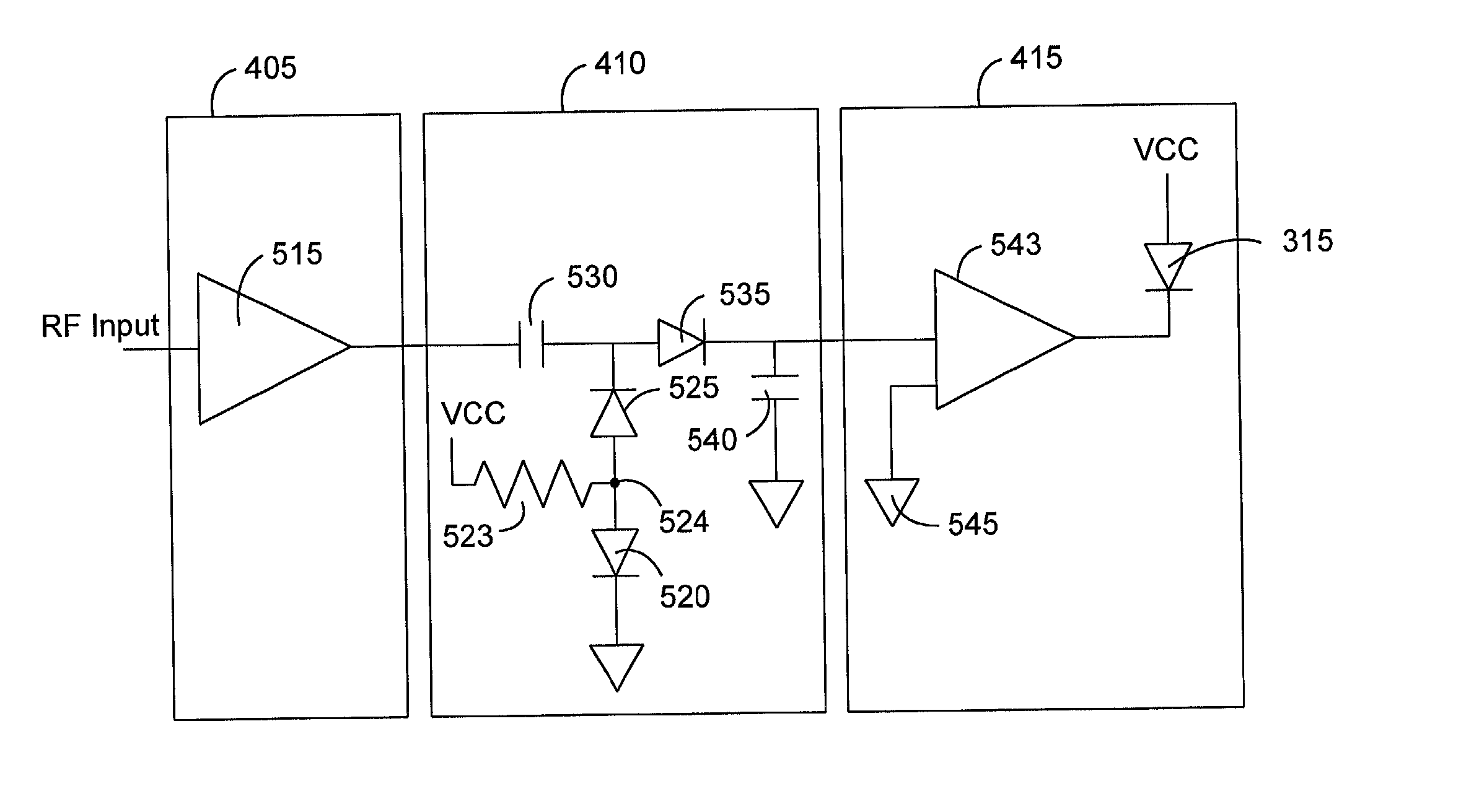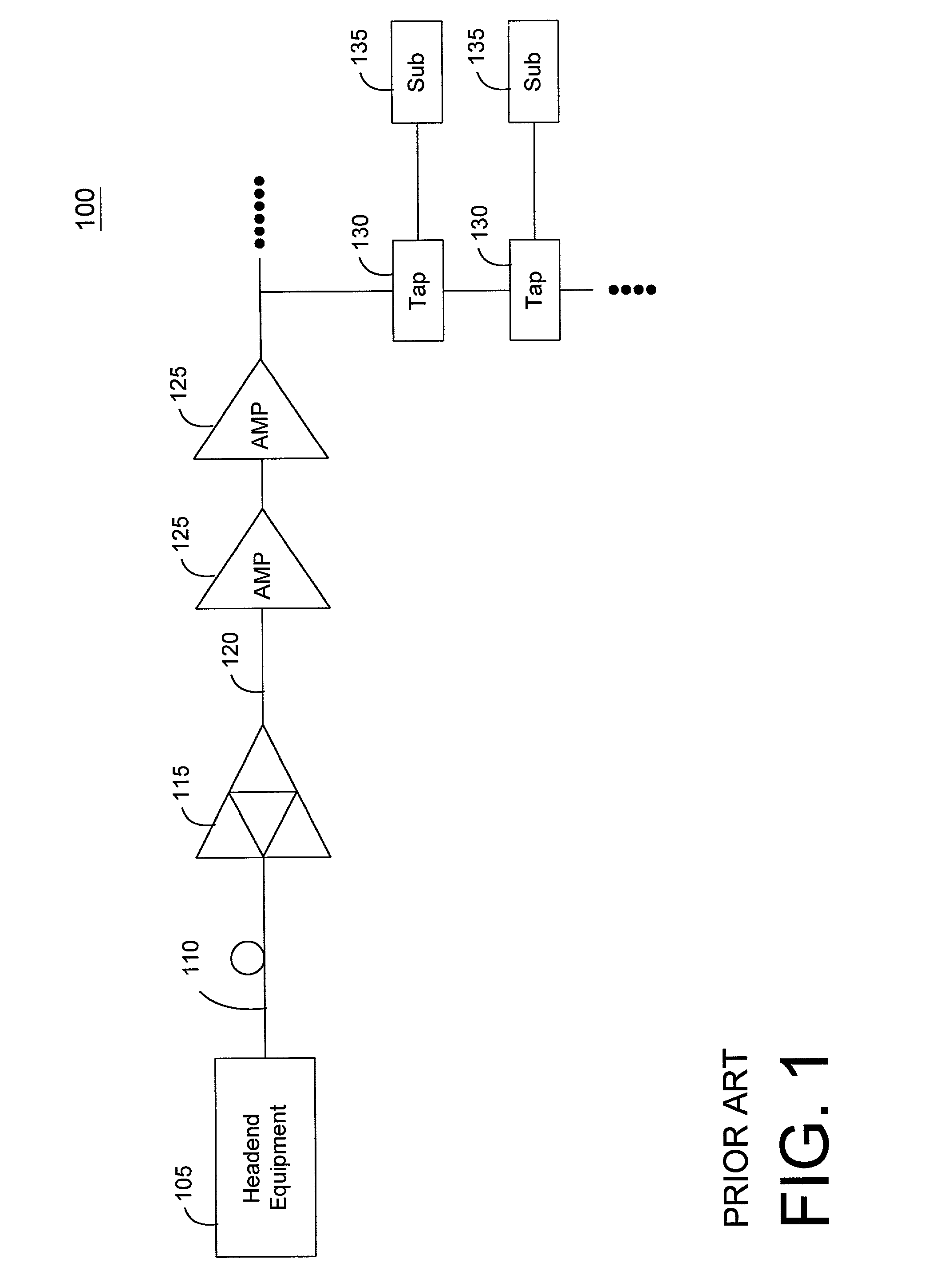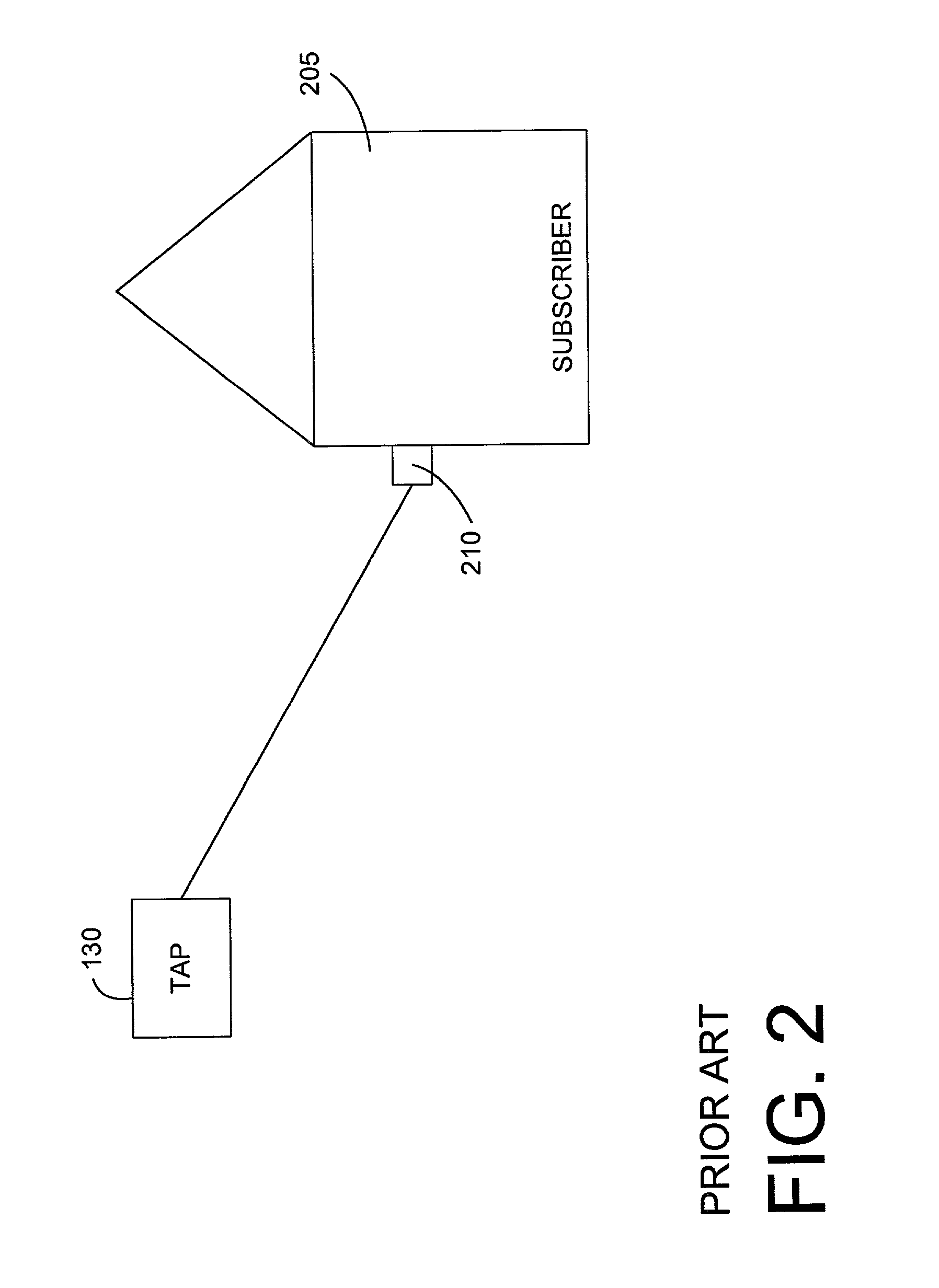Radio frequency (RF) detector with a light emitting diode (LED) indicator
a technology of light-emitting diodes and radio frequency detectors, applied in the direction of indicating the presence of current/voltage, transmission monitoring, wireless communication, etc., can solve the problems of no reception, no reception, and many efforts to determine whether the subscriber is receiving adequate rf signals
- Summary
- Abstract
- Description
- Claims
- Application Information
AI Technical Summary
Benefits of technology
Problems solved by technology
Method used
Image
Examples
Embodiment Construction
[0011] In accordance with the present invention, FIG. 3 illustrates a drop amplifier that includes an RF detector for providing a visual indication that RF signals are present within the drop amplifier 300, which supplies an amplified RF signal to the subscriber. U.S. Pat. No. 6,161,011 to Loveless, the teachings of which are incorporated herein by reference, shows a hybrid fiber coax communications system in which one could implement the drop amplifier 300 and RF detector of the present invention.
[0012] The drop amplifier 300 is generally installed on the outside of a subscriber's home, or alternatively, placed within the home. An input port 305 receives the RF signals from a distribution tap installed within the broadband communications system. Amplification circuitry 308 then boosts the RF signals sufficiently enough for the requirements of the subscriber. Typically, the drop amplifier 300 will amplify the RF signals by seven to fifteen decibels (dBs). The amplification within th...
PUM
 Login to View More
Login to View More Abstract
Description
Claims
Application Information
 Login to View More
Login to View More - R&D
- Intellectual Property
- Life Sciences
- Materials
- Tech Scout
- Unparalleled Data Quality
- Higher Quality Content
- 60% Fewer Hallucinations
Browse by: Latest US Patents, China's latest patents, Technical Efficacy Thesaurus, Application Domain, Technology Topic, Popular Technical Reports.
© 2025 PatSnap. All rights reserved.Legal|Privacy policy|Modern Slavery Act Transparency Statement|Sitemap|About US| Contact US: help@patsnap.com



